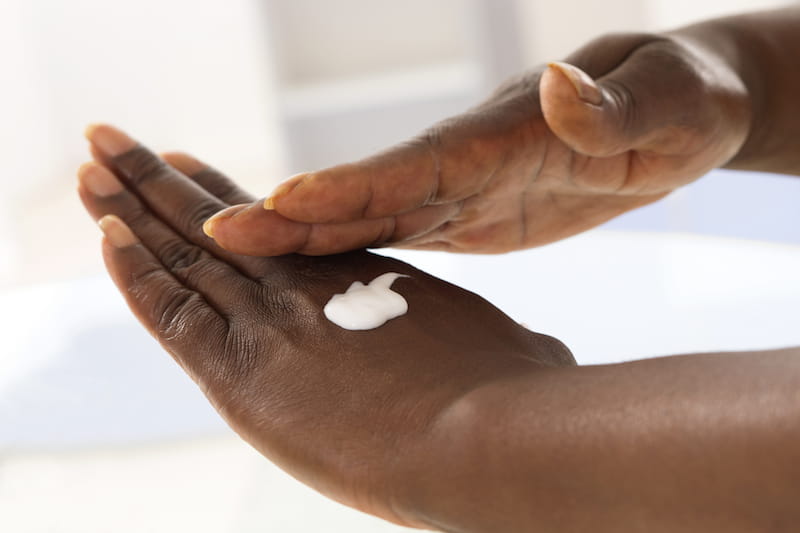For Organ Transplant Recipients, Skin Diseases and Risk Factors Differ by Race

- Drexel Environmental Collaboratory Releases Cross-Sector Findings on Severe Weather Recovery Challenges
- Drexel Launches the Manuel Stamatakis Center for Alternative Investments at the LeBow College of Business
- How and When Could AI Be Used in Emergency Medicine?
- Faculty Highlights: Recent Awards and Grants

It’s been long recognized that the immunosuppressant drugs patients are prescribed after an organ transplant come with a fair share of dangerous side effects — including squamous cell carcinoma and other types of skin disease.
But despite advances to improve skin cancer prevention for these patients, little is known about how skin conditions affect African-American, Asian and Hispanic transplant recipients. That’s a problem, considering that more than half of the 120,000 Americans on the waiting list for organs are nonwhite, according to the U.S. Department of Health and Human Services.
Now, new research from Drexel University College of Medicine shows that nonwhite organ transplant recipients require unique, specialized dermatological care following their procedure. It is one of the first studies to analyze the risk factors, incidence, locations and types of skin disease in this population. The results were published this week in JAMA Dermatology.

The researchers found that the majority of skin cancers in black transplant patients occurred in sun-protected areas, like the groin-genital area, and most of those lesions tested positive for high-risk human papillomavirus (HPV). Further, nonwhite organ transplant recipients were less likely than their white counterparts to have regular skin evaluations by a dermatologist and to know the signs of skin cancer.
These findings suggest that dermatologists need to evaluate, counsel and treat organ transplant recipients differently based on their race, according to principal investigator Christina Lee Chung, MD, associate professor of dermatology in the College of Medicine.
“Practitioners need to know there is not a one-size-fits-all model for their patients,” said Chung, who is the director of the Drexel Dermatology Center for Transplant Patients.
The study builds on a previous report from Drexel Dermatology, which identified 19 skin cancer lesions in 6 percent of 259 nonwhite patients. The authors concluded that all organ transplant recipients, regardless of race, should receive routine, total-body screenings for skin cancer.
In their most recent study, the researchers compared medical records of 412 organ transplant recipients — including 154 white patients and 258 nonwhite (black, Asian or Hispanic) — who were referred to the Drexel Dermatology Center for Transplant Patients between 2011 and 2016. As one of the only models of its kind in the country, the center provides post-transplant dermatological care to every patient who is transplanted by and/or followed by the Drexel University and Hahnemann University Hospital Transplant Programs. That means that every patient, regardless of race is screened annually for skin cancer. This provided a rich dataset for the research team to analyze.
Two hundred eighty-nine transplant recipients exhibited malignant, infectious or inflammatory conditions during their evaluation. However, their primary acute diagnoses differed greatly by race. In 82 white patients, skin cancer was the most common acute problem requiring attention at first visit. Black and Hispanic patients, by contrast, were most often diagnosed with inflammatory or infectious processes, such as fungal infections, warts, eczema, psoriasis and rashes.
Overall, squamous cell carcinoma in situ was the most common type of skin cancer diagnosed in each racial or ethnic group. But the location of the cancerous lesions again depended on the race of the patient. Most lesions in white and Asian patients occurred in sun-exposed areas of the body, like the scalp, neck, chest and back. For black patients, the lesions were primarily found in the groin.
Moreover, six of the nine lesions found on black patients tested positive for high-risk HPV strains, suggesting a strong association between the virus and skin cancer for African-Americans.
Chung says it is still unclear why African-American transplant patients would have higher rates of HPV-related skin cancer. But the findings from this study show that dermatologists need to closely examine the groin, genital and perianal areas in this population.
Additionally, although early detection of cancer is vital, nonwhite transplant recipients would also benefit from addressing fungal and HPV infections, which can be persistent and magnify over time, she said.
“A lot of times doctors are so worried about preventing skin cancer, that they are not thinking about other problems that can greatly affect a person’s quality of life,” Chung said. “But if patients of color who are at risk for these conditions are evaluated early, then they can get a jumpstart on treatment before the issues become chronic and frustrating.”
The researchers also provided questionnaires to 66 organ transplant recipients to find out more about the patients’ awareness of skin cancer prevention. Seventy-seven percent of white patients were aware their skin cancer risk was increased, compared to 68 percent of nonwhites. Only 11 percent of nonwhite patients reported having regular dermatologic examinations, compared to 36 percent of whites. Finally, 45 percent of white patients, but only 25 percent of nonwhite, reported knowing the signs of skin cancer.
The study authors note that the high rates of nonwhite individuals knowing their risk of skin cancer is likely thanks to the strong emphasis that the Drexel University and Hahnemann Hospital Transplant Programs place on the importance of dermatology as part of comprehensive post-transplant care.
The researchers’ total findings underscore the importance of skin cancer screening guidelines for organ transplant recipients, with counseling and treatment contingent on skin type and race.
“Right now, we don’t have any consensus screening guidelines pertaining to post-transplant skin cancer development,” Chung said. “For the future, screening protocols, patient educational materials, and risk assessment tools must be developed that specifically address the non-white population.”
In This Article
Contact
Drexel News is produced by
University Marketing and Communications.